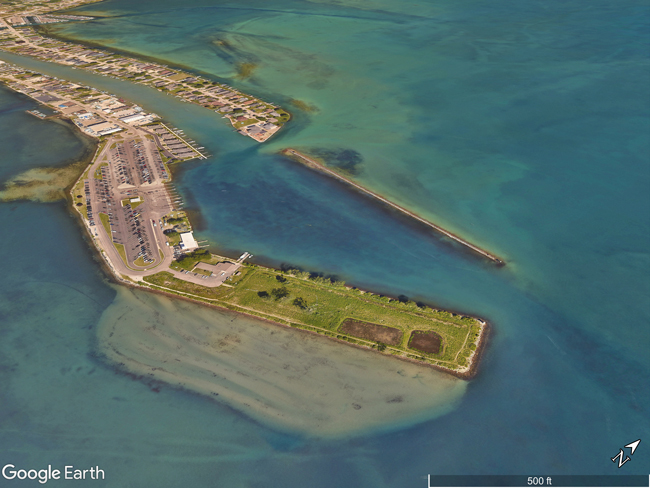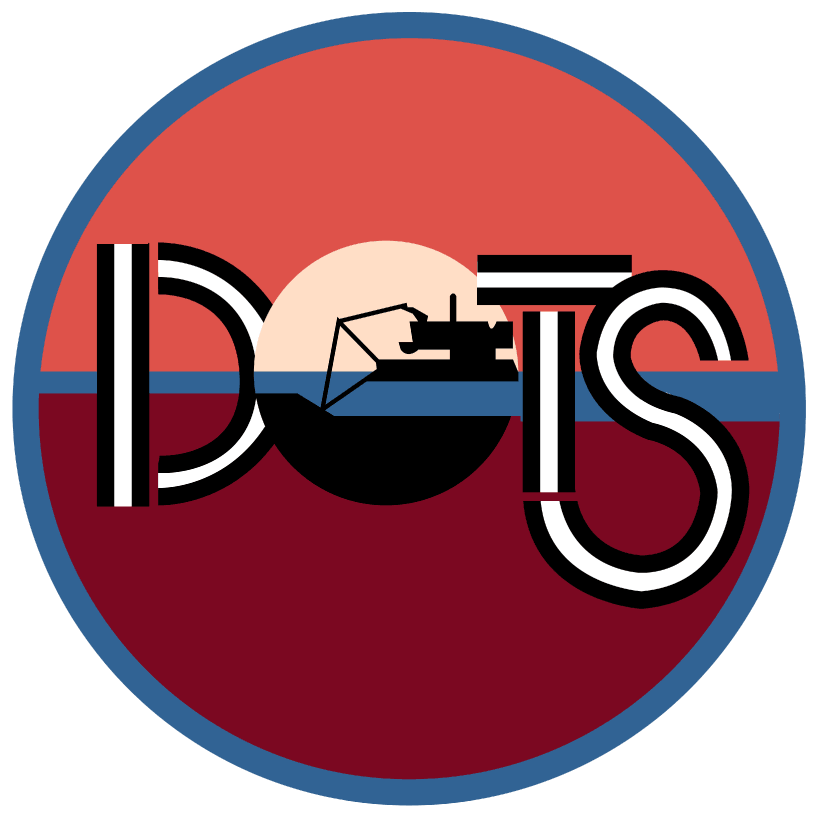CLINTON RIVER MOUTH COASTAL WETLANDS RESTORATION

- Title: Clinton River Mouth Coastal Wetlands Restoration
- State: Michigan
- Project type: USACE
- Greater Beneficial Use Area: Lake St. Clair
- Focus Area(s) approximate center coordinates: 42.5928, -82.7718
- Nearest Federal Navigation Project: Lake St. Clair Navigation Channel
- Owner: USACE Detroit District
- Beneficial Use Categories: Beach/Shoreline Nourishment, Wetland Habitats, Aquatic Habitats
- Dredge type: Hydraulic
- Status: Completed
- Keywords: habitat development, erosion control, Great Lakes Restoration
Description:
The Clinton River flows through Harrison Township, Michigan, into Lake St. Clair, which is part of the Great Lakes watershed. Lake St. Clair lacks emergent wetlands, a crucial habitat for many native species that also provides shoreline protection. Where the Clinton River meets Lake St. Clair, a thin peninsula, originally created as a dredged sediment placement area, now hosts one of the busiest boat launches managed by the Michigan Department of Natural Resources (MDNR) in southeast Michigan. However, in 2010, the site included areas overrun by the invasive common reed (Phragmites spp.), resulting in low-value habitat for native species.
The Clinton River is one of the Great Lakes Areas of Concern, identified as impaired and requiring restoration. Eight beneficial use impairments were identified for the Clinton River including loss of fish and wildlife habitat and degradation of fish and wildlife populations. The Clinton River Mouth Coastal Restoration Project, initiated under the Great Lakes Restoration Initiative and approved by Michigan Department of Environmental Quality (MDEQ) in 2011, aimed to address the two beneficial use impairments related to fish and wildlife. This collaborative effort involved the US Environmental Protection Agency (USEPA), MDEQ, and the USACE Detroit District (LRE) to restore quality shoreline and wetland habitats.
In 2015, LRE removed the invasive plant community at the site and completed bathymetric and topographic surveys to inform sediment placement at two locations south of the peninsula. The design was completed in 2017. Given the dynamic nature of the site with fluctuating lake levels, the team used innovative techniques to stabilize the shoreline, including root-wads designed as wave breaks.
Between August 2017 and June 2018, LRE coordinated the placement of approximately 60,000 cubic yards of sediment at the site, hydraulically dredged during the routine maintenance of the federal navigation channels in Lake St. Clair. The root wads were secured to the lake bottom with earth anchors 400 feet from the shoreline and buried with dredged sediment. By spring 2019, the planting of native species was completed, restoring approximately 11 acres of emergent wetlands and 4 acres of upland habitat. After the initial two years of post-construction monitoring, MDNR resumed management and maintenance of the restored site. The constructed wetlands now provide feeding, cover, spawning, and nursery grounds for fish, as well as valuable resting habitat for birds along the Mississippi Flyway.
This collaborative effort has achieved a remarkable transformation. What was once a diked shoreline overrun by invasive reeds now boasts a diverse landscape populated with native plants such as pickerelweed (Pontederia cordata) and swamp milkweed (Asclepias incarnata). These plants provide shoreline protection and help restore critical environmental conditions supporting the Great Lakes ecosystem. This restoration effort benefits a wide range of wildlife, including mammals, fish, birds, amphibians, reptiles, and insects. Additionally, by creating habitats that naturally reduce sediment and nutrient loading to Lake St. Clair, this project enhances the resilience of the Clinton River area by mitigating erosion, reducing peak flows, and improving water quality.
The Clinton River Mouth Coastal Wetland Restoration project exemplifies collaborative and innovative environmental stewardship, transforming degraded wetlands, mitigating invasive species, and enhancing the shoreline along Lake St. Clair. By leveraging resources and expertise from multiple agencies, the project has made significant strides in restoring critical wetland habitats, improving water quality, and enhancing ecosystem resilience by creating 14 acres of habitat. The project, adjacent to one of the busiest boat launches in southeast Michigan, also boosts local housing values and increases tourism revenue for the region.
Further Readings:
- USACE Detroit District. (2018). ISS-USEPA-Clinton River Mouth Coastal Wetlands Restoration. August 16.

